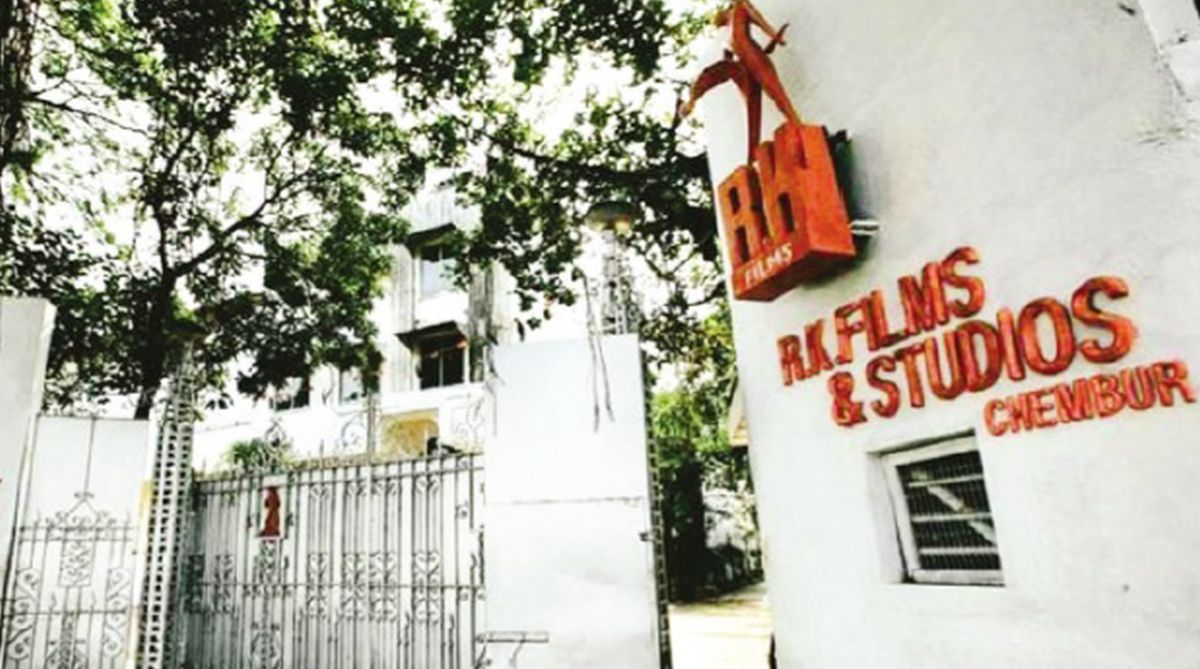Dino Morea reveals shocking reason behind his breakup with Bipasha Basu
Despite the heartbreak, Dino acknowledges that time was the ultimate healer. “Time heals everything, and we became the best of friends after that."
The heartbreaks now being experienced after the revelation that the 70-year-old studio is up for sale relate not just to the emotional connections but also to the conscious effort by Raj Kapoor to give his work a social relevance.

The entrance to RK Studios.
Just when the film fraternity across the country is lamenting the impending closure of RK Studios, old-timers in Bengal have reason to regret that the lovable moments of the only Bengali film that Raj Kapoor had acted in is also on the verge of fading into oblivion. It was 1956 when the showman fulfilled a long-cherished dream to produce and act in a bilingual project.
There had been unconfirmed reports that he had signalled to Satyajit Ray that he was willing to lend the RK banner to a film by the master with the producer-actor in the cast. The proposal had never materialised. But what did was an association with Sambhu Mitra who had established Bohurupee by then. The result was Ekdin Ratrein Bengali and Jagte Raho in Hindi that had caused quite a sensation.
Advertisement
The heartbreaks now being experienced after the revelation that the 70-year-old studio is up for sale relate not just to the emotional connections but also to the conscious effort by Raj Kapoor to give his work a social relevance. The entertainment factor was unmistakable but films like Barsaat, Awaraand Shree420became landmarks after Khwaja Ahmed Abbas, RK’s collaborator, wrote screenplays with a concentration on human issues across the social divide. To these landmarks was added the bilingual project that had a connection with what was then Calcutta where Raj Kapoor had spent part of his youth.
Advertisement
Sambhu Mitra had left the Indian Peoples Theatre Association to create his own platform for experimental theatre in 1948. Along with his wife Tripti and long-time associates like Kumar Ray, he had directed and acted in Char Adhyay and Rakta Karabi but had occasionally strayed into films as an actor but only in this case as co-director. The young innovator of the stage may have been drawn to the story of the thirsty villager desperately in search of water trespassing into the affluent setting of an apartment building to witness the harsh realities of corruption and greed among those who pretend to be civilised.
One of the most enduring memories from the film was the picturisation of the song Ei duniaye bhai shobi hoi with a drunken Chhabi Biswas and a “moving” drum concealing the villager, played by Raj Kapoor, who is on the run. It was a song composed by Salil Chowdhury that became a hilarious contribution to the serio-comic comment on social disparities.
Most of the films produced by Raj Kapoor and shot in his studio – among them Jis Desh Mein Ganga Behti Hai, Mera Naam Joker, Bobby and Satyam Shivam Sundaram– reflected the same concern woven into the producer-director-actor’s unique brand of entertainment. A reworking of the tramp image borrowed from Chaplin and adapted to the Indian context became part of his creative consciousness unlike anything that mainstream audiences had witnessed till then.
The songs that went with the character became a huge success after the initial failure of Aag with which the studio had opened its doors. But no one could have expected films like Awara, Boot Polish and Jagte Raho to score on the festival circuit. That was the time when the studio became the vibrant centre of creative activity – down to the logo with an image of Raj Kapoor with a violin in one hand and Nargis, head arched backwards, in the other. The image drawn from a scene in Barsaatwas said to have been inspired by a European painting. One can only hope that the creative ideas that survived the fire in the studio last year will be preserved after the property changes hands.
The fire had taken a devastating toll that included much of the Raj Kapoor memorabilia and this could have been one of the reasons why the family finally decided to bring the curtain down. It was a choice between keeping tradition alive at a considerable cost when much of the action in Bollywood had moved to Film City and installing state-of-theart technology in the old studio with the uncertainties involved.
It was a delicate choice between the romantic idealism that Raj Kapoor preached in his films and the practical realities of sustaining the losses. But there are memories that will never fade – of Raj Kapoor being one of the country’s earliest cultural ambassadors abroad, of collaborators like writer Abbas, music directors Shankar-Jaikishen, singers Mukesh and Manna Dey, cameraman Radhu Karmakar and, finally, of Nargis who had walked into his life and 15 of his films and then walked out to do Mother India.
The old may give way to the new but the Raj-Nargis teamwork should remain an iconic symbol of mainstream cinema at its best. RK Studios may become part of history but stories will continue to be told of both the creative energy and the boisterous experiences and more intimate and informal sessions that had often prompted cameraman Subrata Mitra to share Raj Kapoor’s company.
The man who believed that the show must go on had shown up in miserable shape at Vigyan Bhavan to receive the Dadasaheb Phalke award from the President in 1987 and had to be rushed to hospital when he collapsed at the function. If the show does go on, it will embrace a rich heritage that Raj Kapoor had triggered off – that should never die.
Advertisement